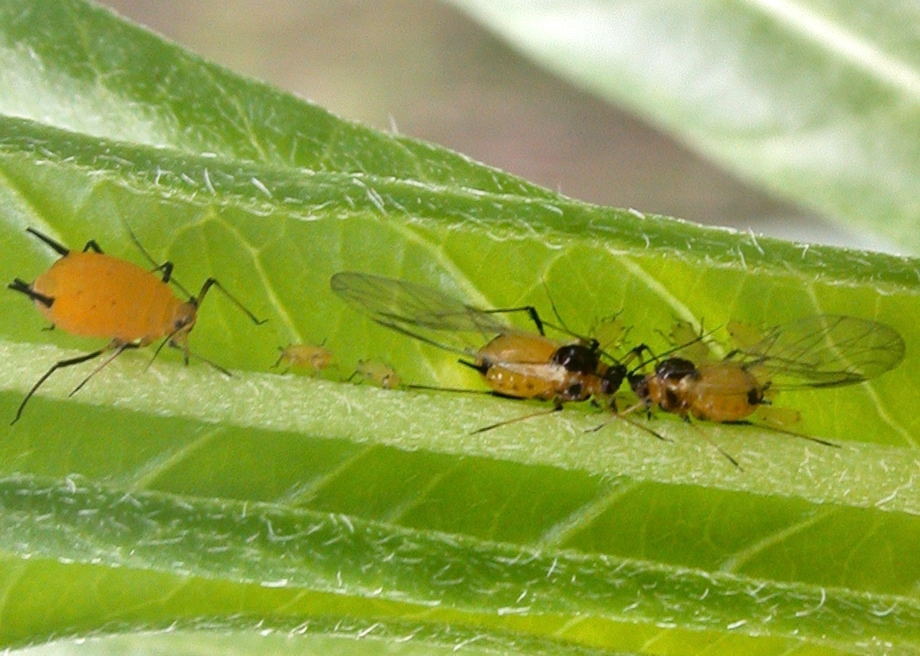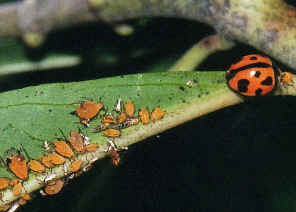Milkweed Aphid - Aphis nerii
Family Aphididae
This page contains pictures and information about Milkweed Aphids that we found in the Brisbane area, Queensland, Australia. They are also known as Oleander Aphids.

- Body length 3mm
- Milkweed Aphids also known as Oleander Aphids. They are bright yellow in colour with black legs. They have a pair of black posterior at the back of abdomen.
- Milkweed Aphids feed on oleanders and milkweeds. They start colony on tender young stems. Aphids usually cause little damage to plants even the colony grow to very large size. Aphids suck juice from plants but they do not need so many sugar. They pass them out of their bodies as honey-dew. This provides an excellent medium for the growth of a black fungus. The black fungus mold interferes with photosynthesis and somewhat retards the growth of the plant.



- There is a site in Macgregor, Brisbane with a lot of milkweeds. We often visit there to look for the Wanderer Butterflies. On those milkweeds, some are full of yellow Milkweed Aphids. There are not many activates except all the aphids are sucking the juice from plants.
- Most of them are female. Like all others aphids, they give birth live instead of laying eggs. On the above pictures those little white fellows are the newly born nymph. Notice there are the wingless and winged form of the aphids. Their wings are thin with very reduced venation.



- Lady-beetles are the major predators of aphids. Lady-beetle can be found easily when they are hunting among the aphids. The pictures above show lady-beetles catching aphids. In the middle of the first picture, notice two maggots feeding on aphids. They could be the larvae of the Hoverfly. In the last photo a aphid was sucking the "milk" from the milkweed while an ant came for the honey-dew of the aphid. The two ladybirds hunt for the aphid.



- Notice that most of the aphids are heading downwards. As most other aphids, Milkweed Aphids are also parasitised by the wasp. In the above photos those with dull or darker colours are parasitised. Also check this page for aphids parasitised.



- Reference:
- 1. Insects of Australia - CSIRO, Division of Entomology, Melbourne University Press, 2nd Edition 1991, p 455.



